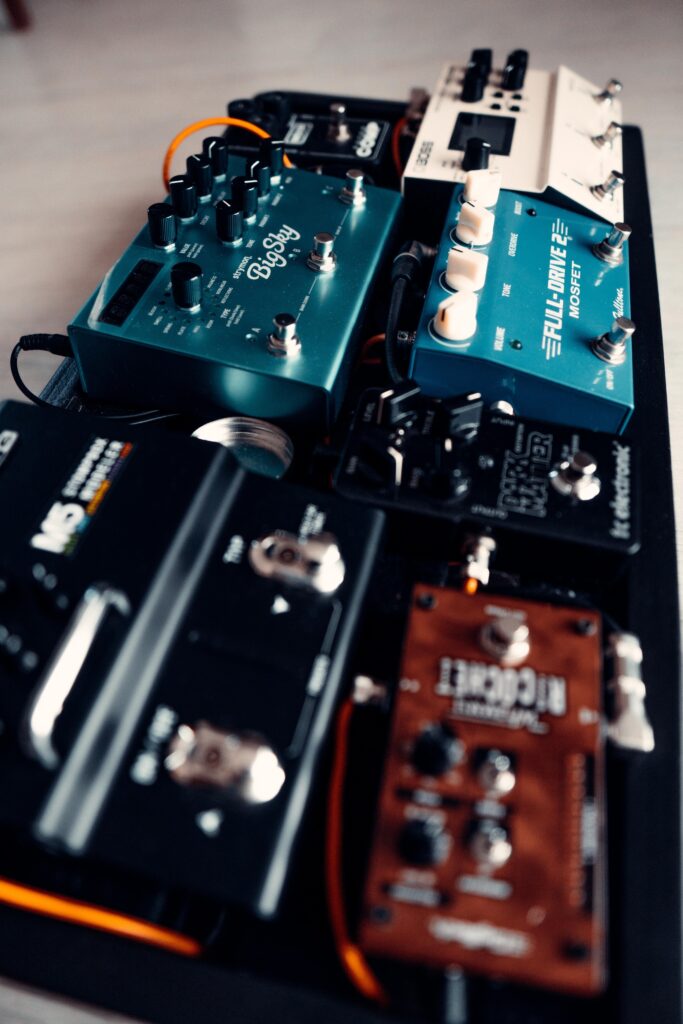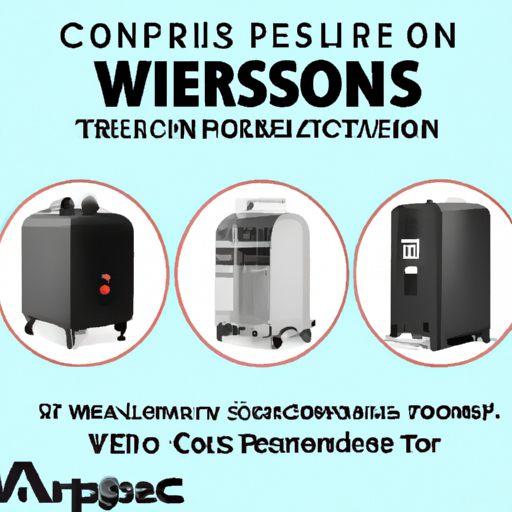Are you in the market for an air compressor, but unsure whether to choose one with a tank or without? Look no further as we explore the pros and cons of both options, helping you make a well-informed decision. Whether you need it for DIY projects or professional use, understanding the advantages and disadvantages of each type will ensure you find the perfect fit for your needs. Let’s dive into the world of air compressors and discover which one is right for you.
Advantages of an Air Compressor with a Tank
Provides consistent air pressure
One of the key advantages of an air compressor with a tank is that it provides consistent air pressure. The tank acts as a reservoir, storing a large amount of compressed air that can be released when needed. This means that even if the demand for air fluctuates, you can still maintain a steady pressure throughout your application. This consistent air pressure is particularly useful for tasks that require a constant flow of air, such as spray painting or powering pneumatic tools.
Allows for continuous operation
Another benefit of an air compressor with a tank is that it allows for continuous operation. The tank ensures a constant supply of compressed air, which means you can work on your projects without any interruptions. This is especially advantageous in industrial settings where a continuous stream of compressed air is essential for efficient and uninterrupted workflow.
Reduces the strain on the motor
Having a tank in your air compressor helps to reduce the strain on the motor. When the motor starts, it fills the tank with compressed air. As the tank becomes pressurized, the motor can switch off, reducing the load on the motor. The air compressor then only needs to turn on when the tank pressure drops below a certain level, resulting in a longer lifespan for the motor. This not only saves energy but also minimizes maintenance requirements in the long run.
Suitable for heavy-duty applications
Air compressors with tanks are well-suited for heavy-duty applications. The large capacity of the tank allows for extended operation without the need for frequent refills or downtime. This makes them ideal for tasks that demand a high volume of compressed air, such as industrial manufacturing, construction, and automotive repair. With their ability to handle heavy-duty workloads, air compressors with tanks provide reliable and consistent air supply, ensuring that you can complete your job efficiently.
Disadvantages of an Air Compressor with a Tank
Requires more space
One of the downsides of an air compressor with a tank is that it requires more space compared to tankless models. The tank adds bulk to the overall size of the compressor, making it less compact and potentially limiting its suitability for smaller workspaces. If you have limited space available in your workshop or garage, you may need to consider alternative options that offer a smaller footprint.
Can be heavier and less portable
The presence of a tank in an air compressor also adds to its weight, making it less portable compared to tankless models. If you frequently need to move your air compressor from one location to another, the added weight of the tank may pose a challenge. While wheels and handles can enhance mobility to some extent, it is important to consider how often you will need to transport the compressor and whether the added weight is feasible for your needs.
May require additional maintenance
Air compressors with tanks may require additional maintenance compared to tankless models. The tank needs to be inspected regularly for signs of wear and corrosion, and it may need to be drained to remove any accumulated moisture. Additionally, tank components such as pressure relief valves, gauges, and drain valves should be checked and replaced if necessary. While these maintenance tasks are not overly demanding, they do add to the overall care and upkeep of the compressor.
Possibility of tank corrosion
One potential disadvantage of an air compressor with a tank is the possibility of tank corrosion. Over time, moisture in the compressed air can cause the interior of the tank to corrode. This corrosion can lead to leaks, reduced tank capacity, and even structural damage if left untreated. Regular inspection, maintenance, and proper drainage techniques can help minimize the risk of tank corrosion. However, it is important to note that tanks made from materials such as stainless steel or fiberglass are less prone to corrosion compared to those made from mild steel.

Advantages of an Air Compressor without a Tank
Compact and lightweight
An air compressor without a tank, also known as a tankless or portable air compressor, offers the advantage of being compact and lightweight. Without the added bulk of a tank, these compressors are highly portable and easy to carry around. They are particularly suitable for applications where mobility is essential, such as inflating tires, operating pneumatic nail guns, or powering airbrushes in remote locations.
Suitable for small-scale applications
Tankless air compressors are ideal for small-scale applications that do not require a continuous supply of compressed air. If you primarily use compressed air for light-duty tasks around the house, such as inflating sports equipment or cleaning dust from electronics, a tankless compressor can provide sufficient air pressure and flow without the need for a larger tank-based system.
Offers immediate air supply
One of the main advantages of an air compressor without a tank is its ability to provide immediate air supply. As soon as you turn on the compressor, it starts generating compressed air without any delay. This quick response is particularly valuable when working with tools or equipment that need instant air pressure, such as airbrushes or impact wrenches. With a tankless compressor, you can start your project right away without waiting for the tank to fill up.
Requires less maintenance
Compared to air compressors with tanks, tankless models generally require less maintenance. Without a tank to inspect, drain, and ensure corrosion resistance, the maintenance tasks are simplified. Tankless air compressors typically have fewer components to service, making them easier to maintain. However, it is still important to perform routine maintenance, including checking and replacing air filters, ensuring proper lubrication, and monitoring for any signs of wear or damage.
Disadvantages of an Air Compressor without a Tank
Vulnerable to overheating
One limitation of air compressors without a tank is that they are more vulnerable to overheating compared to their tank-based counterparts. As there is no reservoir to store compressed air, tankless compressors often operate at higher RPMs, generating more heat in the process. Prolonged use without sufficient cooling mechanisms can lead to overheating, potentially causing damage to the compressor and affecting its performance. It is important to closely monitor the operating temperature and follow any recommended cooling guidelines to avoid overheating issues.
Limited capacity and pressure
Due to their compact design, air compressors without tanks typically have a limited capacity and pressure range. They are designed for smaller applications and may not provide enough air volume or pressure for heavy-duty tasks. If you frequently work with high-demand tools or machinery that require a significant amount of compressed air, it may be more beneficial to opt for an air compressor with a tank to ensure an adequate and consistent air supply.
Inconsistent airflow
Another disadvantage of tankless air compressors is that they can produce inconsistent airflow. The absence of a storage tank means that the air is delivered directly as it is generated. As a result, there can be fluctuations in the air pressure and flow, leading to inconsistencies in performance. This may not be ideal for applications that require a constant and steady airflow. However, advancements in technology have minimized this issue, and certain tankless compressors now feature built-in mechanisms to regulate airflow and reduce inconsistencies.
More prone to wear and tear
Air compressors without tanks may be more prone to wear and tear compared to those with tanks. The higher RPMs and increased workload can put additional strain on the motor, resulting in faster component degradation. Regular maintenance and timely replacement of worn-out parts are essential to ensure the longevity and reliability of a tankless compressor. Additionally, investing in a high-quality tankless air compressor from a reputable manufacturer can help mitigate the risk of premature wear and tear.

Factors to Consider When Choosing an Air Compressor
Application and Usage
The first factor to consider when choosing an air compressor is the specific application and usage requirements. Determine the tasks you need the compressor for, whether it is for small-scale household projects or heavy-duty industrial applications. This will help identify the necessary air pressure and flow rates, as well as the overall capacity needed. Matching the compressor’s specifications to your intended application will ensure optimal performance and efficiency.
Required Air Pressure and Flow
Understanding the required air pressure and flow rates is crucial in selecting the right air compressor. Different tools and equipment have specific air pressure and flow requirements that must be met to operate effectively. Refer to the manufacturer’s guidelines or consult the tool’s specifications to determine the necessary pressure and flow rates. Choosing an air compressor that can deliver the required levels ensures that your tools perform optimally and avoids potential damage.
Portability and Space
Consider the portability requirements and available space in your workshop or job site. If mobility is important, a compact and lightweight tankless air compressor may be the best option. However, if you have a dedicated workspace and require a continuous supply of compressed air, an air compressor with a tank might be a suitable choice. Assessing your portability needs and evaluating the available space will help determine the most appropriate compressor design.
Budget and Cost
Budget considerations are essential when purchasing an air compressor. Set a realistic budget and explore the available options within that range. It is important to strike a balance between cost and quality, ensuring that you invest in a compressor that meets your needs without compromising performance or reliability. Consider factors such as initial purchase price, maintenance costs, and energy efficiency when evaluating the long-term value of the compressor.
Different Types of Air Compressors
Reciprocating Air Compressors
Reciprocating air compressors, also known as piston compressors, are one of the most common types of air compressors. They utilize a piston and cylinder mechanism to generate compressed air. Reciprocating compressors are available in both single-stage and two-stage configurations, with two-stage models providing higher pressures. They are versatile and can be used for a wide range of applications, from pneumatic tools to painting and sandblasting.
Rotary Screw Air Compressors
Rotary screw air compressors are widely used in industrial settings where continuous and high-volume compressed air is required. These compressors operate on a rotary motion principle, utilizing two interlocking screws to compress the air. Rotary screw compressors are known for their consistent airflow, minimal vibration, and quiet operation. They are commonly used in manufacturing processes, automotive repair, and large-scale construction projects.
Centrifugal Air Compressors
Centrifugal air compressors are designed for high-volume and high-pressure applications. They rely on centrifugal force to compress the air, using an impeller and diffuser to generate the necessary pressure. Centrifugal compressors are typically found in large industrial settings, such as petrochemical plants, power generation facilities, and gas pipelines. They are known for their efficiency, reliability, and ability to deliver large volumes of compressed air.
Axial Flow Compressors
Axial flow compressors are primarily used in aerospace and aircraft applications. They are specifically designed to provide high compression ratios and are most commonly found in jet engines. Axial compressors consist of a set of rotating blades that accelerate the airflow in an axial direction. While not typically used in general industrial applications, axial flow compressors play a critical role in the aviation industry, where efficiency, compactness, and high-speed performance are paramount.

Choosing an Air Compressor with a Tank
Tank Size and Capacity
When selecting an air compressor with a tank, consider the tank size and capacity that aligns with your specific needs. The tank size determines how long the compressor can operate before it needs to refill, while the capacity refers to the amount of compressed air the tank can store. Larger tanks provide a longer operating time and reduce the frequency of refills, which can be beneficial for continuous operation or tasks that require a high volume of compressed air.
Pressure Ratings
The pressure rating of an air compressor with a tank is an important consideration, as it determines the maximum air pressure the compressor can generate. Consider the air pressure requirements of your tools or equipment and make sure the compressor’s pressure rating exceeds those requirements. Operating the compressor below its maximum pressure ensures a safety margin and prevents potential damage to the compressor and connected devices.
Duty Cycle
The duty cycle refers to the amount of time an air compressor can operate within a given time period. It is important to choose a compressor that has an appropriate duty cycle for your specific application. Duty cycles are represented as a percentage, indicating the ratio between the operating time and the rest or cooling time. Higher duty cycles indicate a compressor that can run for longer periods without overheating, making them more suitable for continuous or heavy-duty applications.
Motor Power and Efficiency
The motor power of an air compressor determines its ability to generate compressed air. Consider the power requirements of the tools or equipment you will be using and ensure that the compressor’s motor can meet those demands. Higher-powered motors are capable of delivering greater volumes of compressed air and can handle heavier workloads. Additionally, it is important to choose a motor that is energy-efficient to minimize operational costs and reduce environmental impact.
Choosing an Air Compressor without a Tank
CFM Requirements
When choosing an air compressor without a tank, it is crucial to consider the required Cubic Feet per Minute (CFM) rating. CFM represents the volume of air that the compressor can deliver in one minute. Determine the CFM requirements of your tools or equipment and make sure the compressor can provide the necessary airflow. Insufficient CFM can result in reduced tool performance, leading to inefficiency and potential damage.
Operating Pressure
Similar to air compressors with tanks, the operating pressure of a tankless compressor is an important factor to consider. Verify the specific air pressure requirements of your tools and ensure that the compressor can generate the necessary pressure. Operating the compressor at a lower pressure than required can lead to underpowered tools, while exceeding the pressure limits may cause equipment damage or safety hazards. Always match the compressor’s operating pressure to your specific needs.
Motor Type and Performance
The type and performance of the motor in a tankless air compressor play a significant role in its overall efficiency. Different motor types, such as direct drive or belt drive, have their own advantages and considerations. Direct drive motors are typically more compact and lightweight, while belt drive motors are known for their durability and reduced noise levels. Consider the motor’s performance specifications, such as horsepower and RPM, to ensure it can meet the demands of your application.
Heat Dissipation Mechanisms
Air compressors without tanks are more susceptible to overheating due to their continuous operation. Therefore, it is important to choose a compressor that incorporates effective heat dissipation mechanisms. Look for features such as cooling fins, built-in fans, or thermal overload protection to ensure that the compressor remains within a safe operating temperature range. Adequate heat dissipation helps maintain the longevity and reliability of the compressor, preventing potential motor damage and premature wear.

Maintenance Considerations for Air Compressors with a Tank
Draining the Tank
Regularly draining the tank is essential to prevent moisture buildup and corrosion. Most air compressors with tanks are equipped with drain valves that facilitate easy removal of condensed water. Follow the manufacturer’s guidelines for draining the tank, which typically involves releasing the pressure and opening the drain valve. Regular drainage helps maintain optimal air quality, prolongs the life of the tank, and reduces the risk of corrosion-related issues.
Inspecting and Replacing Tank Components
Inspecting the tank components is an important maintenance task for air compressors with tanks. Regularly check the pressure relief valves, gauges, and drain valves for any signs of wear, damage, or leakage. Replace any faulty or malfunctioning components promptly to ensure the safe and efficient operation of the compressor. Additionally, visually inspect the tank itself for any signs of corrosion or structural integrity issues and address them accordingly.
Ensuring Proper Lubrication
Proper lubrication is crucial for maintaining the performance and longevity of the air compressor’s motor and other moving parts. Consult the manufacturer’s recommendations for the appropriate lubrication type and schedule. Some compressors may require periodic oil changes, while others may be oil-free. Failing to lubricate the moving parts adequately can lead to increased friction, overheating, and premature component failure.
Checking for Air Leaks
Air leaks can significantly affect the efficiency and performance of an air compressor. Regularly check the connections, hoses, and fittings for any signs of leaks. Use a mixture of soapy water and apply it to the suspected areas while the compressor is running. If bubbles form, it indicates air leakage, and the affected components should be repaired or replaced. Addressing air leaks promptly helps maintain optimal air pressure and reduces unnecessary strain on the compressor.
Maintenance Considerations for Air Compressors without a Tank
Cleaning or Replacing Air Filters
Regularly cleaning or replacing the air filters in a tankless air compressor is vital to ensure efficient and clean operation. Air filters prevent dust, debris, and contaminants from entering the compressor, protecting its internal components. Follow the manufacturer’s instructions for cleaning or replacing the air filters at recommended intervals. Clogged or dirty filters can restrict airflow, reduce performance, and potentially damage the compressor.
Inspecting and Maintaining Valves
Check the valves in a tankless air compressor to ensure they are functioning properly. Valves play a critical role in regulating air pressure and flow, and any malfunction can lead to suboptimal performance. Regularly inspect the valves for signs of wear, dirt, or damage. Ensure that they open and close smoothly and make any necessary adjustments or replacements. Proper valve maintenance helps maintain consistent airflow and prevents potential leaks.
Managing Heat Dissipation
Given the increased vulnerability to overheating, effective heat dissipation is crucial for tankless air compressors. Keep the compressor in a well-ventilated area and avoid obstructing the airflow. Regularly clean the cooling fins or fans to remove any accumulated dust or debris that could impede heat dissipation. Additionally, ensure that the compressor is not operating in excessively hot environments to prevent overheating and potential motor damage.
Lubrication Requirements
While some tankless air compressors are oil-free, others may require lubrication for their moving parts. Refer to the manufacturer’s instructions for proper lubrication procedures, if applicable. Follow the recommended lubricant type and schedule to ensure optimal performance and longevity of the compressor. Over-lubrication or using the wrong lubricant can lead to performance issues and damage to the compressor.


